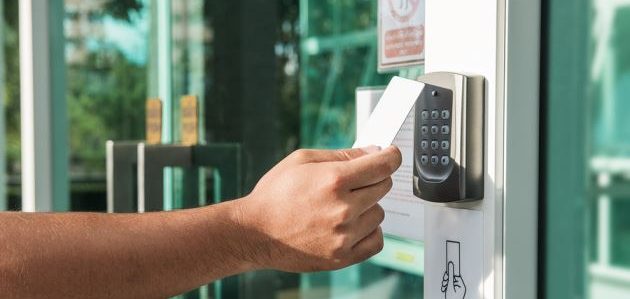Improving physical security in the workplace is something many organizations actually overlook. In today’s world, all of the focus goes to technology and cybersecurity, so much that physical security no longer seems to be as important as before. Sadly, this is not a way to look at it – Physical security in the workplace is just as important as cyber security. Your workplace might feature great technology and cybersecurity, but there is a slight chance some of the employees still believe they would easily know if a criminal walked into the organization. It is important to note that there are some very sneaky criminals out there, some are so sneaky that by the time any of the employees know what happened, they would already be out of the organization carrying whatever he/she came for in the first place.
How can physical security be improved in the workplace? The first step to improving physical security in the workplace is understanding the importance of it. Understanding the great importance of physical security, you will need to set up physical security procedures and make your employees follow them. Physical security procedures need to be followed by everyone, including the employer. Physical security procedures are there to secure the people and ‘’confidential’’ files of the workplace. In order to make a great change and improve physical security in the workplace, you must implement certain changes such as visitor access procedures, password change policies, employee training, door locking, limit the access to areas with important information or equipment.
While there is a reason for us to focus on cybersecurity these days, physical security is still very important for every employee and organization out there. Most of the criminals nowadays really do turn to long-distance attacks, but the old-school way of walking in the organization and walking back out with precious information is still there, and it seems to be just as successful. We may no longer hear about such attacks as often as we did before, but that does not mean they are never happening.
8 Steps to Improving Physical Security In The Workplace
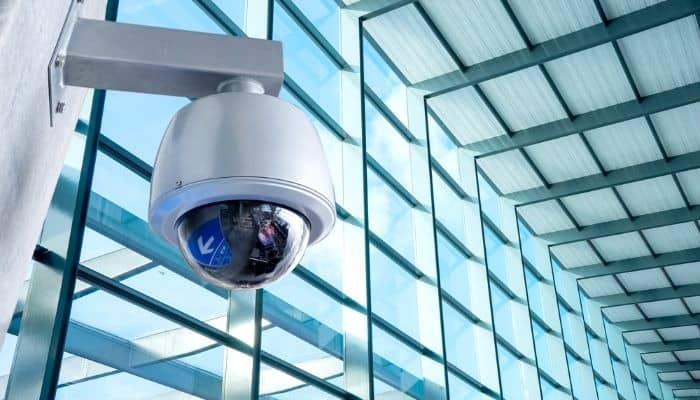
Improving the physical security of the workplace is not as expensive as some of the cybersecurity measures. Physical security is all about preventing the possibility of someone entering your business and taking away something precious. Most criminals who enter and leave will most likely steal something very important and endanger your overall business. Taking time to spread awareness on the physical security in your workplace will not only make it safer for all of you, but it will also make your business bloom right away.
Did you know? – Employees who work in a safe environment are less stressed, they are motivated for work and often come up with unique business solutions. (check out 100 Security Statistics we’ve created)
we’ve created)
1. Limiting Access To The Areas With Important Equipment Or Information
Good businesses treat their data like it is very valuable because it really is. You do not see banks letting people walk around in their vaults, so you probably should not do that either. Certain rooms and areas of your organization should be locked to everyone but those who need access to them. You want to keep these areas theft-free and only have trustworthy people around them. Areas filled with sensitive information and equipment are the areas you must pay attention to, these areas are often the main reason why cybersecurity and physical security attacks happen at all.
2. Create An Inventory Of Devices
Many businesses today use mobile devices to do their transactions. While mobile devices make it all very simple and convenient, they also have certain security issues many people forget about. Data breaches happen mainly due to stolen devices such as smartphones, laptops, and tablets. Having a documented inventory of the devices your business owns will help you know where these devices are at the moment, you will know who has them and easily keep a track on all of them. Inventory of devices will help you quickly identify the person who stole the device, give you the time it happened and let you know if any of the data had been stolen.
3. Setup Physical Security Procedures For Your Employees
Setting up physical security procedures should be one of the first things you do in order to improve physical security in the workplace. Coming up with a decent set of policies your employees need to follow will guard your organization from intentional and even unintentional data theft. Once your employees develop a security mindset, physical security of your workplace will rise in levels. Make sure your employees understand the importance of physical security and make them respond to potential threats. Give your employees a way to report their concerns and opinions related to physical security in the workplace.
4. Employee Training
Once you have your employees understand the importance of physical security procedures, you will need to give them the proper training. Offer training and coaching from security professionals. Having employees attend such courses, they will learn more about situational awareness and develop a better understanding of the potential threats around them. Certain courses even teach on how to respond to threats such as shooters and other very dangerous threats. Having an organization filled with people who know how to react in dangerous situations will not only keep your data safe, but also boost up your employee productivity and motivation.
5. Set Up Surveillance And Monitoring System
Video surveillance and monitoring system are extremely helpful when it comes to providing physical security for an organization. Once these are properly set up, your organization will have a way to check on anyone who enters and exits your facility, even the time when it all occurred. You should monitor all of your restricted areas and check up on the documentation for security events that happen in and around them. Modern monitoring systems are easily connected to the tablet or a smartphone, they alert you whenever there is something suspicious happening in your workplace.
Did you know? PCI encourages the use of cameras to monitor all of the vulnerable areas, it is actually one out of their twelve requirements for those companies who deal with cardholder data. (We have written an article – 33 Workplace Secuirty Awareness Tips )
)
6. Secure The Facility From The Outside In
It is important to secure the facility you and your employees work in. Making sure your staff and data is protected at all times will require you to secure your facility from the outside in. Know the level of the crime of the area your business is placed at, check on the assets you possess and take into consideration the type of the business you own. Knowing your most important asset is your own staff, making sure you prevent dangerous individuals from entering the facility is the priority. Think of getting exterior fencing, security cameras featuring motion detectors, decent lighting at the parking lot, emergency call boxes, alarms, door locks, and license plate readers.
7. Protect Your Printers, Drives, Workstations, Data
Electronic gadgetry and data stored on them are very easy targets for the criminals. These things are very valuable to the business and criminals usually resell them for a lot of money. Making sure desktop items are all properly locked away when the employees are not around is an important step to make. Protecting your valuable data and electronics is important just as protecting your handbags and wallets. There are many companies out there who allow their employees to take their laptops home with them. This means reducing the potential costs of a robbery that happens outside of regular working hours. Of course, those who are not allowed to take their laptops with them, they should secure them with a cable lock . When it comes to data, there is always a slight chance some disaster will happen and you will be thinking of your data recovery a lot more than you are at the moment. Creating backups of the important data is not only a way to protect your precious information, but also a great way to recover from a business disaster. (Check our article on Efficient Workplace Security Devices
. When it comes to data, there is always a slight chance some disaster will happen and you will be thinking of your data recovery a lot more than you are at the moment. Creating backups of the important data is not only a way to protect your precious information, but also a great way to recover from a business disaster. (Check our article on Efficient Workplace Security Devices )
)
8. Creating A Good Emergency Plan
It is never fun to prepare for the worst, but it is one of the most important things a business has to do. Create an emergency plan and teach your employees about the steps they need to make in case something happens. Emergency plans often talk about the activation of the emergency system, evacuation, reaching safety and potential life threats. A good emergency plan will require your employees to have additional training on CPR and first aid, no one really knows what can go wrong. Once you have a set emergency plan, your employees must share their knowledge about it and openly speak about their concerns related to it. An emergency plan has to be designed so that it suits every human being found in the workplace, a plan that will save lives in case of an emergency.
Did you know? A good emergency plan has saved many lives and businesses out there, it promotes security and care between employees and the staff.
7 Strategies to Help You Maintain Strong Physical Security
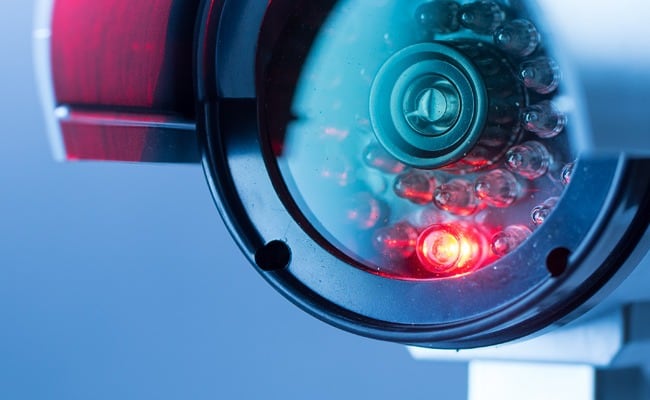
Once you manage to improve the physical security in the workplace, maintaining it will be another important thing to focus on. You might have thought of the great improvements and you managed to implement them, but who actually takes time to check them out and how do you plan to maintain the strong physical security forever?
1. Workplace Safety Coordinator
Some business owners simply do not have enough time to improve the security of the workplace. Hiring a safety coordinator is a great option for everyone who has this problem. A safety coordinator will be the one who has to manage security improvements, maintain the security and interact with people about it. This person has to be itemizing security issues for the entire staff at the meetings, has to conduct regular safety audits and keep an eye for possible safety problems.
2. Security Guards
There is no gadget or machine that does a better job at keeping your employees, customers, and information safe better than the guards themselves. Guards will make sure your customers and employees feel safe at all times, they will keep an eye on the possible threats from the unwanted visitors. All of the guards must be properly trained and aware of the security policies at the workplace they are in.
3. Motion Detectors
Motion detectors are made to detect pretty much any sort of motion. These devices are portable, easily installed and have no monthly monitoring fees at all. Setting up a couple of motion detectors around your workplace will ensure no burglars will pass through without you being alarmed about it. While motion detectors will help you maintain physical security in the workplace, they can also offer a great feeling of protection to your employees.
4. Intrusion Alarm
There are many intrusion systems out there, they ensure your workplace is always safe and fully protected, even when you are not around. Setting up a decent intrusion system at your workplace will make sure immediate actions are taken in case of a bad event. There are many companies out there who actually managed to prevent their emergency from escalating all thanks to great intrusion system.
5. Fire Extinguishers
Pick out the responsible employees and have them attend fire extinguisher training. It is extremely important to have people who know how to handle emergency fires and have them follow up with the evacuation procedure. There are many employees out there who are clueless on how to handle fire extinguishers and most of them react very badly to such emergencies.
fires and have them follow up with the evacuation procedure. There are many employees out there who are clueless on how to handle fire extinguishers and most of them react very badly to such emergencies.
6. Smart Cards
Why not make your employee badges actual access cards? Smart cards are used to open doors and they are basically wireless keys designed to communicate with a card reader in order to open the door. Smart Cards and card readers are meant to give to the user the maximum control over the security in their workplace. Changing ID combinations and switching them in the control panel help you maintain even better control over who is allowed to access sensitive areas of the workplace. These smart devices will keep detailed records of all the people who used the door and their activity.
7. RFID Tags
RFID Tags are a type of the tracking system, they use barcodes to identify items. ‘’RFID’’ is short for ‘’radio frequency identification’’, knowing this it is obvious to say RFID tags work based on radio frequency technology. They transmit data through radio waves between the tag itself to a reader. This transmits all of the information right into the RFID computer program. Many companies today use RFID tags to make their employees lives a little bit easier. RFID tags make it easier to log on to computers, buy food and get in the office.
are a type of the tracking system, they use barcodes to identify items. ‘’RFID’’ is short for ‘’radio frequency identification’’, knowing this it is obvious to say RFID tags work based on radio frequency technology. They transmit data through radio waves between the tag itself to a reader. This transmits all of the information right into the RFID computer program. Many companies today use RFID tags to make their employees lives a little bit easier. RFID tags make it easier to log on to computers, buy food and get in the office.
A tip: If your company features RFID tags, you are still not 100% secure. RFID tags are great, but they must be with their owners at all times, otherwise, they might fall into completely wrong hands. Make it a responsibility and protect RFID tags as an extremely important security tool.
Advantages And Disadvantages Of Physical Security
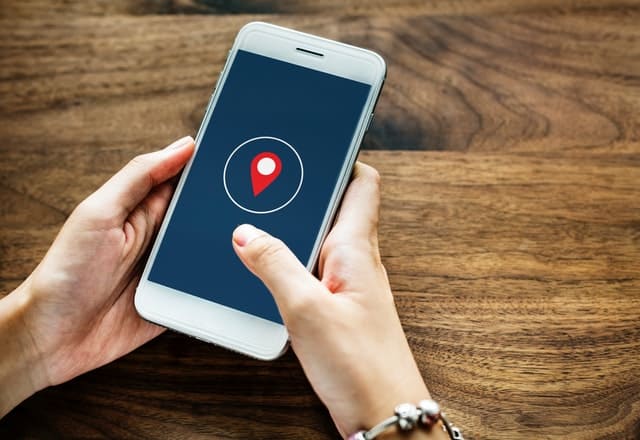
Having strong physical security at the workplace can turn to be a great benefit to the business and people in it. However, everything always has its advantages, but also disadvantages.
Advantages Of Physical Security
A safe workplace is usually the most productive workplace. It is really no surprise the employees work better in a safe and well-protected environment. Businesses who managed to create and maintain strong physical security in the workplace usually have many layers of security. The more layers of security the business has, the harder it is for criminals to accomplish their missions. Above, I have described a couple of great methods and equipment that will make the job of a criminal a lot harder, nearly impossible.
Organizations featuring strong physical security are often those who have the most satisfied customers, employees and great business success behind them. With great physical security in the workplace, there is a steady workflow, no setbacks, and worry.
Disadvantages Of Physical Security
Sadly, there are certain disadvantages of physical security that not many talks about. Some of the methods can actually seriously harm or injure animals and people. All of the smart cards can get stolen, fences can get jumped over and hackers can easily find a loophole in one of the security systems. Some employees also feel like their privacy is disturbed due to all of the CCTV cameras in the workplace. It is important to keep the privacy of your employees safe, otherwise, they will no longer trust you. (We have written an article on the 50 Workplace Secuirty Questions Everyone is Asking )
)
It is extremely important everyone in the workplace knows how to update their devices and take care of their access cards. Those applications and devices that require updates are usually the applications we use to store our documents, files, and information. Each time an update appears, that same update brings in new security features – which is why the installation of these updates is a must for everyone.
Eight Simple Steps That Will Help You Reduce The Risk Of Physical Security Attacks In The Workplace
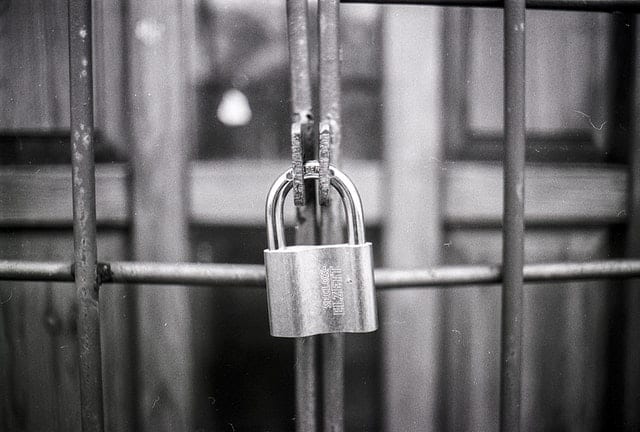
It might seem as if everyone is safe and your data is under the safest security measures, but there are always loopholes. I came up with a couple of things you can do to prevent and reduce the risk of physical security attack at your workplace. These steps are very simple and not pricey at all, these steps will teach you about how to be cautious and know what to expect from potential unwanted visitors.
1. Visitor Identification Logs
Asking all visitors for identification and logging it really costs nothing and it can reduce the risk of your organization becoming a victim of physical security attack. Each time a visitor appears, write down the entry, entry and exit times, ask them where they come from and what do they need. The more you talk to the visitors, the more you will know about them and they will be less likely to try and commit a crime.
2. Escorting The Visitors
After you have all of the needed information about the visitor, you should make sure they have someone who will escort them to the area they need to go to. People who are unfamiliar with the area can roam to very sensitive areas and even cause a lot of trouble by doing so. Always have someone with them, those who are left unattended can make a massive amount of damage to your business.
A tip: Always maintain visual contact with the visitors, getting distracted by your phone or not paying attention to what is being said could cost you a lot of money long-term.
3. Visitor Hearing Distance
It happens that employees often discuss their business ideas and solutions in the areas of the workplace. Make sure everyone is aware of the hearing distance the visitors might have. Of course, if the area is too small, maybe it is better to just move to the conference or meeting room and discuss the business while visitors are around. Important and very confidential conversations are not for everyone to hear, there should be time and the place for those.
4. Keeping Files And Documents Safe
Come up with a safety policy related to files and documents. Do not allow your employees to gather up a bunch of useless documents and have them sit on their table. These documents might be outdated, but they can contain very sensitive information about the business itself. Make sure no one leaves the documents and files on the printer or tables around the office. It is very often that unattended papers end up as an easy target for the criminals who casually pass by.
5. Secure Facility Keys And Access Cards
Same as it goes for files and documents, facility keys and access cards need to be on a secure spot at all times. The moment your employees leave to home, the facility needs to be locked and all of the keys and smart cards should be stored somewhere safe. There are many companies out there who use safes just to store their keys, money and important items.
just to store their keys, money and important items.
6. Securing Passwords
Writing passwords down on a paper is so outdated, no one should be doing it anymore! Make sure your employees never write down their passwords and store them around their working area. Those passwords that are found under keyboards and computer screens are simply a big no for your business. Today, there are many ways to safely generate and store our passwords!
7. Get A Shredder
Having a good shredder can save everyone’s head at times. If you work in an office, you probably know how cluttered it can all get with the documents and outdated files. While these documents and files are no longer of any use at all, they can contain very sensitive information about people and the business itself. A good shredder will make sure all of this information is shredded into pieces and you will have fewer things to worry about, less clutter to distract you and a lot more space for new business ideas.
8. Think Like A Criminal
If you wish to maintain strong physical security in the workplace, ask your employees to always think like criminals before leaving their desk area – you do the same. When I say they should think like ‘’criminals’’, I mean they should think in a way a criminal would. A criminal wants information, fancy gadgets or important data – these are the things you must secure! Employees must know how to think of the ways they can prevent any risks for theft and secure their workstations right away. There is no standard profile for a criminal, but there is a standard way of thinking criminals have upon stealing something.
Related Questions
What is an authentication protocol? Authentication protocol helps us establish a remote access connection, it transfers the authentication data between two different entities. The method behind authentication protocols is rather simple, it is a verification which helps us find out whether the computer or a person who request the data really are who they claim to be.
What is PCI and what does it do? PCI stands for Payment Card Industry – It is a security standard created to ensure all organizations who deal with cardholder data have a secure environment. PCI encourages physical security in the workplace and their requirements might seem rather simple, yet they take a lot of effort to maintain.

